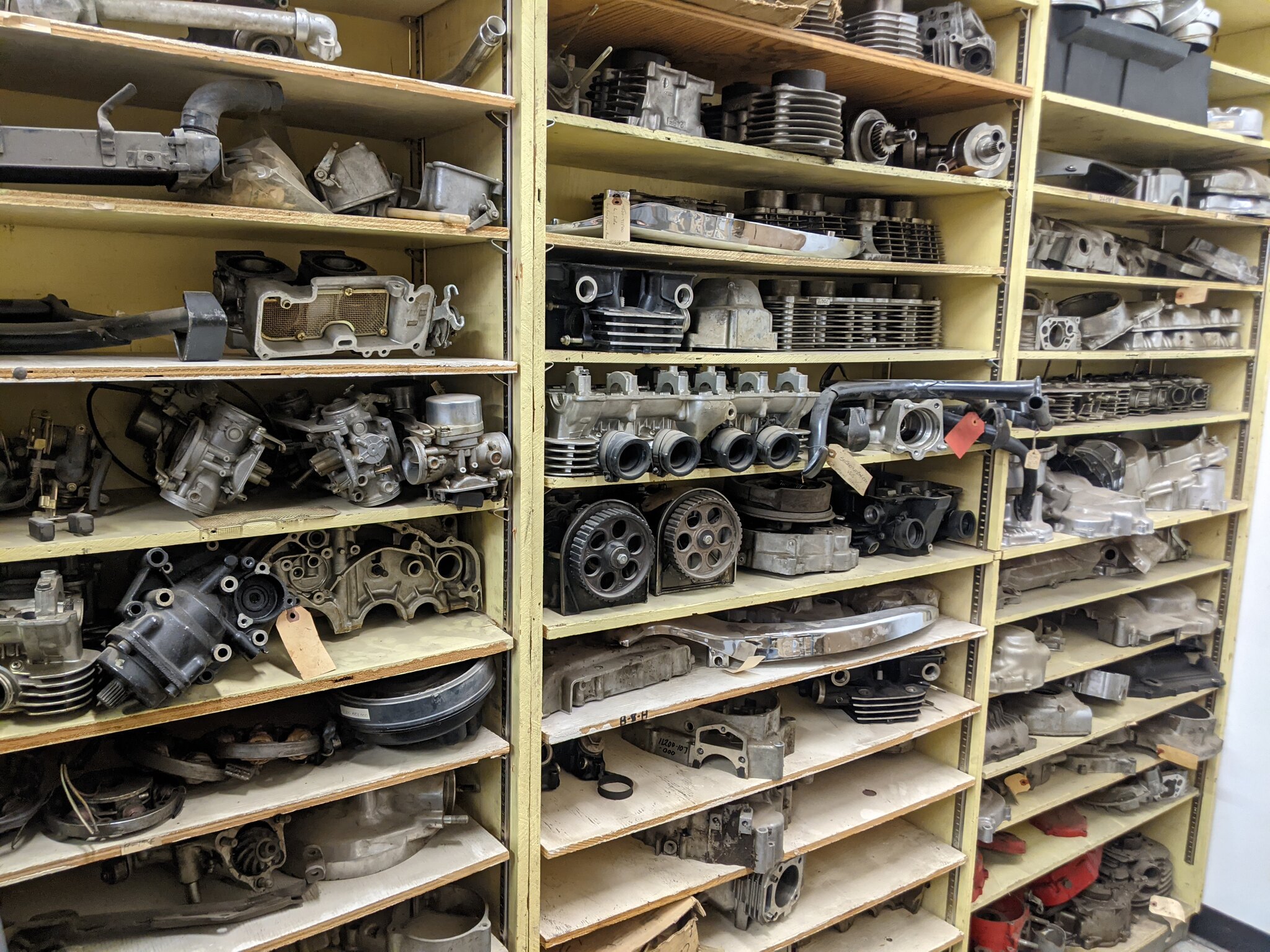A Thorough Take A Look At Bike Components: What Every Biker Needs To Know
A comprehensive understanding of motorbike components is not simply beneficial yet critical for any type of rider aiming to maximize efficiency and security. Each component, from the engine's elaborate workings to the dependability of brake systems, plays a crucial duty in the general experience and functionality of the bike. However, past just knowing what these parts do, it is important to appreciate exactly how they support and communicate each other. This interconnectedness can make the distinction in between a smooth adventure and unanticipated difficulties. What ins and outs lie within this mechanical harmony that every motorcyclist should understand?
Recognizing the Engine
The engine, usually considered as the heart of a motorcycle, is a complicated assembly of elements that function in harmony to transform gas into activity. At its core, the engine's primary feature involves the combustion procedure, where air and gas mix and stir up within the cylinders, resulting in regulated surges that drive the pistons. These pistons go up and down, transforming chemical power into power, which subsequently transforms the crankshaft, inevitably powering the bike.

Recognizing the intricacies of a motorbike engine is vital for enthusiasts and cyclists alike. It not only supplies understanding into how motorbikes accomplish their outstanding power and speed yet also aids in reliable upkeep and troubleshooting, ensuring durability and dependability when driving.
Suspension Equipments
While the engine powers the motorbike, the shock absorber plays an important duty in ensuring a controlled and smooth ride. The suspension system is in charge of absorbing shocks from the road surface area, maintaining tire contact, and providing stability throughout cornering and stopping. It consists of 2 major parts: the front forks and the rear shock absorbers.
Front forks are usually telescopic, having a springtime and moistening device. The spring presses and expands to take in bumps, while the dampening system manages the motion to avoid too much jumping. This combination ensures the front wheel remains touching the road, using superior handling and comfort.
The rear suspension, normally a monoshock or twin-shock arrangement, functions likewise to the front suspension but is customized to sustain the motorbike's weight and motorcyclist - moto parts nz. It takes care of rear wheel movement, adding to the bike's overall equilibrium and responsiveness
Shock absorber can be adjustable, allowing cyclists to make improvements preload, compression, and rebound setups according to personal preferences and riding problems. This adjustability boosts efficiency by enhancing the motorcycle's communication with varied terrains. In recap, a reliable suspension system is vital for cyclist comfort, safety, and the bike's handling prowess.
Brake Elements
Stopping power is a fundamental facet of bike safety, and it depends upon the efficiency of the brake components. The key aspects of a bike's braking system include the brake pads, calipers, blades, and master cylinder. mx gear nz. Each of these elements plays a critical function in ensuring reliable stopping efficiency
Brake pads are crucial as they create the required friction versus the blades to decrease or stop the motorcycle. Built from products such as sintered metal or natural compounds, the choice of brake pad material substantially affects efficiency and longevity. Calipers, real estate the brake pads, use pressure to the pads when the brake bar is involved, assisting in contact with the blades.
The blades, commonly made from stainless-steel or cast iron, are placed to the wheels and act as the surface area against which the brake pads press. Their design, including browse around this site size and thickness, influences warmth dissipation and quiting power. The master cyndrical tube, attached to the brake lever, produces hydraulic pressure transmitted with brake lines to the calipers, ensuring consistent stopping pressure.
Normal upkeep and evaluation of these parts are vital for optimum efficiency, avoiding wear and making sure biker safety and security when traveling.
Tire Fundamentals
Beyond maintaining robust braking systems, guaranteeing optimal tire efficiency is just as considerable for motorbike security and performance. Tires are the sole call factor between the motorcycle and the road, making their problem pivotal in dealing with, security, and overall adventure quality.

Examine the sidewall for the DOT (Division of Transportation) code to determine the tire's age. Spending focus in these tire basics not just maximizes performance but also dramatically boosts riding safety and security.
Electrical Systems
In the world of bike upkeep, the electrical system plays an important function in guaranteeing dependable performance and motorcyclist safety and security. This intricate network incorporates important elements such as the battery, generator, starter electric motor, and circuitry harness. Each element is crucial for the seamless procedure of the motorbike, from ignition to lights and interaction with various sensors.
The battery works as the heart of the electric system, giving the necessary power to start the engine and run devices. Consistently examining the battery's voltage and terminals for rust is essential to prevent unexpected failures. The generator, on the other hand, reenergizes the battery while the engine is running, making sure a constant power supply.
To maintain it, cyclists need to pay interest to any type of uncommon noises or difficulties throughout startup. Making sure that the wires are intact and complimentary from damage is essential for protecting against short circuits and guaranteeing performance.
Final Thought

Stopping power is an essential aspect of bike security, and it hinges on the effectiveness of the brake elements. The main elements of a motorcycle's braking system consist of the brake pads, calipers, rotors, and master cyndrical tube.Brake pads are necessary as they create the required rubbing against the blades to reduce down or Click This Link quit the motorbike.Beyond maintaining robust braking systems, making sure optimum tire efficiency is equally substantial for bike safety and best adv helmet security and effectiveness.In the world of motorcycle upkeep, the electric system plays an essential role in ensuring dependable efficiency and rider safety and security.